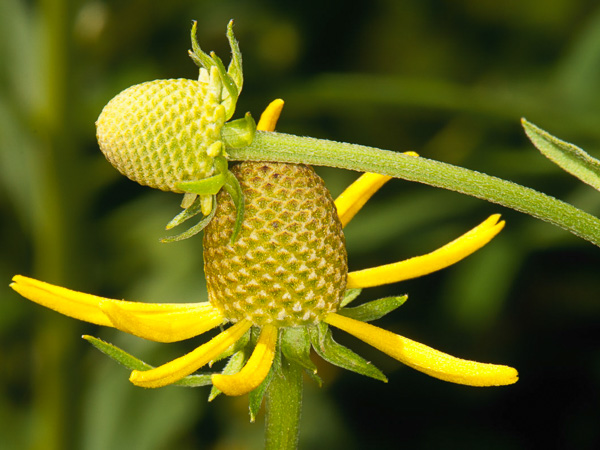
2 Key Strategies in the War with Weeds
April 27, 2016
Is Your Garden Social? Why a Plant Community Approach works!
July 25, 20186 Key Principles for Drought Tolerant Landscape Design
An underappreciated yet highly valuable benefit of a natural landscape is resilience to weather extremes, including drought. A thoughtful, established natural landscape is the next best thing to xeriscaping when it comes to dealing with drought conditions. But unlike xeriscaping a high quality natural landscape also offers resilience when the weather returns to normal or even swings to overly wet.
It’s been yet another summer of extreme weather across the country. While some are flooded, others are in serious drought. Such is the case in my region and my property. It’s as dry as I can remember! And to add to that stress, temperatures continue to shift higher overall. Many of us invest a lot of time and money in our landscapes and drought puts these investments at great risk. Sadly, this frustrating weather seems to be the new norm, so it makes sense that we should be thinking about how to build in as much resiliency to weather extremes as possible.
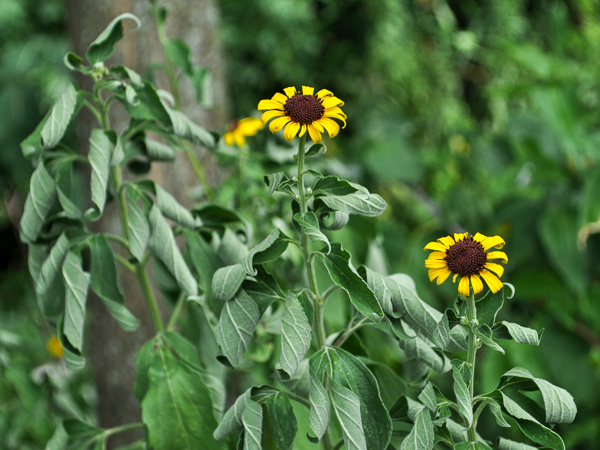

Natural Landscaping and Drought Tolerance
So what is it about natural landscaping that can result in greater drought tolerance than a typical landscape approach? It starts with a fundamental tenant of natural landscaping –working with the site (yard) and nature to maximize success while minimizing overall work and input. I’ll expand on this further and look at the key principles behind this premise in order to learn how you can put this to work in your yard.
Key principles leading to greater drought tolerance
1. Choose plants well suited to existing conditions – We would all love to just pick our favorite plants and place them wherever they’ll provide the most pleasure. But all too often this ends in disappointing performance, even when we’ve tried to amend the soil. Create a stress resilient, drought tolerant landscape by instead carefully evaluating existing conditions in each area of your yard (be aware that conditions can and often do vary widely -even in a small yard!). Then select plants that want to grow in those specific conditions and satisfy your functional and esthetic desires. For example – you may have a western exposure side of the house, near the foundation that bakes in late day sun; the soil may be poorly drained and compacted as a result of the home building. Knowing this, choose a tough adaptable shrub such as Shrubby Cinquefoil (Potentilla fruticosa) instead of a fussier shady woodland denizen like Rhododendron. The Rhododendron may do fine until drought conditions put it to the test and it withers up and dies back; the Shrubby Cinquefoil will survive virtually unaffected during even the driest of times.
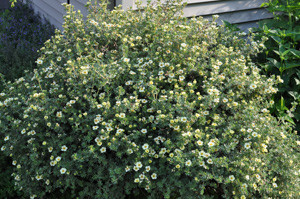
2. Anticipate extremes – A key part of evaluating conditions is to anticipate extremes. There will probably be areas of your yard prone to being negatively affected by dry, droughty conditions. Soil conditions, sun/shade patterns, microclimates and overall site position within the larger context can all affect this. Don’t just evaluate based on limited information.
By the way, it’s useful to know that some plants grow well in both wet conditions and dry, even droughty conditions. This seeming anomaly has to do with their roots and tolerance to low oxygen environments. Examples of these plants include Common Ninebark (Physocarpus opulifolius), Joe-pye (Eutrochium purpureum) and Black Tupelo (Nyssa sylvatica).
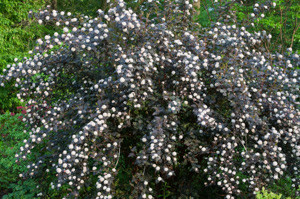

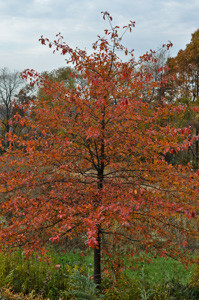
3. Embrace adapted natives – Whenever possible turn to regionally native plants for your yard (remembering principle #1). A native plant growing in its preferred habitat has evolved and survived over a very long time without our input – and that includes periods of drought.
4. Use a Plant community approach to plantings – Most of us are used to plantings that are either individuals or mono-cultural groups of plants surrounded by mulch. In contrast, a plant community has plants spaced closely, inter-mingled species, and all the available spaces filled including the ground. As with other living things, plants simply do better in group environments –they are happier and healthier for the various interactions afforded by the community environment. And the healthier the plant, the more able it is to tolerate stresses of all kinds. An added benefit is that even a small amount of rain can perk up specific plants within the community improving the overall visual appeal of the planting.
5. Incorporate Smart Site Hydrology – Another goal of natural landscaping is to retain as much of the water that falls on or runs across a site as possible. Don’t divert it away or allow it to run-off. Ways in which this can be accomplished include:
• When possible, such as new construction, modify the topography to maximize water retention through the use of depressions, swales and berms.
• Enhance existing topography to maximize water retention – don’t “drain” that wet spot – plant it! Plant a rain garden.
• Use mechanical features including collecting and storing roof drainage or incorporate buried perforated drain pipe to slowly disperse roof drainage into the ground.
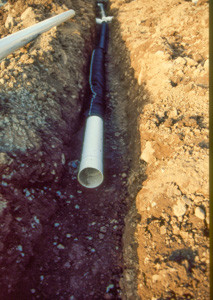
6. Proper Establishment – A natural landscape is put into motion with good design; proper establishment and maintenance are also critical to success. A key aspect of this is ensuring plants have sufficient water while they are still establishing so they develop deep roots that can access deep water during drought. Water deeply and less frequently as establishment progresses.
Unfortunately, when all is said and done, plants and landscapes are still living things that require water eventually. Even the most drought tolerant landscape simply survives but does not thrive during severe drought. Persistent and recurring droughts can also have a cumulative long-term effect only revealed many years later. And, drought stress can add cumulatively to other stresses and thus be a player in the demise of susceptible plants. If you can provide relief to a drought stressed planting by providing supplemental watering, by all means do so. When you do, water slowly and deeply to get water to the deepest parts of root systems to ensure they remain alive.
If you have further questions or if all this seems more daunting than you can manage yourself, please contact for help to create your own resilient, sustainable – natural landscape.


